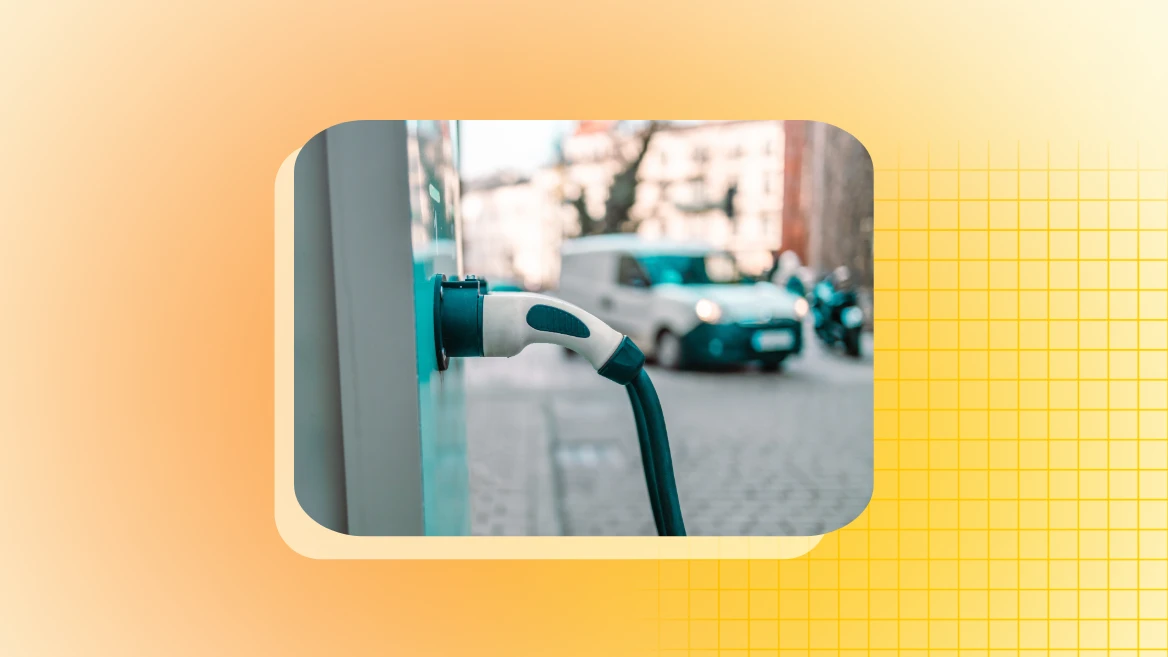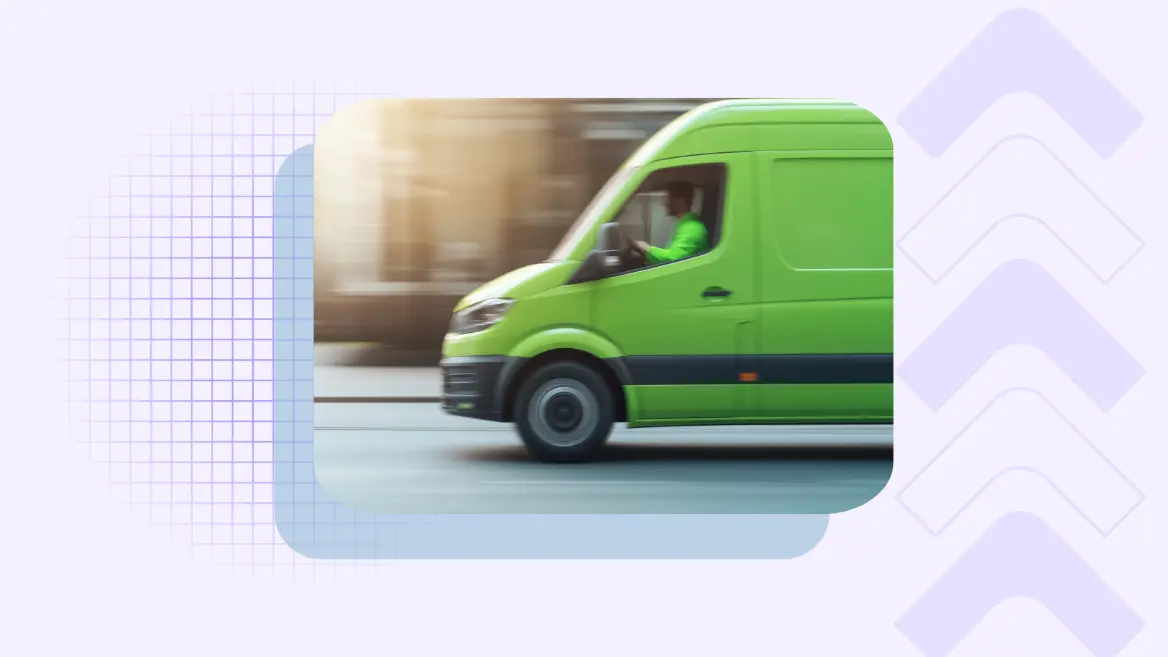Electric vans are now a common sight on UK roads. But for couriers who rely on long days, tight deadlines, and heavy loads, the question is still the same — are electric courier vans really practical for everyday work?
There’s no doubt the shift to electric is gaining pace. With more models available and government targets edging closer, couriers are starting to weigh up if now’s the time to make the switch — or if sticking with diesel still makes more sense.
What we’ll cover
Get access to 15,000+ courier loads a day on Courier Exchange
Be your own boss. Set your own hours. Make your own money.
What’s driving the move to electric?
Government policy is the biggest influence. The UK aims to phase out new petrol and diesel vans by 2030, with the EU following by 2035. For couriers, that means future courier jobs will increasingly rely on low- or zero-emission vehicles.
Electric vans also help businesses avoid ULEZ charges and other clean-air zone costs. For city-based drivers, that can save thousands a year — especially in London, where a diesel van can be charged £12.50 a day.
Manufacturers have responded quickly. There are now more than 30 electric van models on sale in the UK, from compact city vans to large 3.5-tonne panel vans. They promise cleaner operations, lower running costs, and less van maintenance.
But for couriers, what matters most is whether those promises hold up on the road.
What electric courier vans can (and can’t) do
Today’s electric courier vans have come a long way.
Most small and medium vans can now cover around 180 to 250 miles on a single charge — enough for local or regional routes.
Larger vans, like the Ford E-Transit and Renault Master E-Tech, push closer to 280 miles in ideal conditions.

But range depends on how you drive. Long motorway trips, cold weather, and heavy payloads can reduce that figure by 20–30%. For drivers doing A-to-B pallet runs, a 250-mile claim may mean 170 miles in real use. That’s fine for regional work, but harder for cross-country runs.
Charging time is another consideration. Most vans can reach 80% charge in about 40 minutes using a fast charger, but not every site has bays large enough for long-wheelbase models. For now, depot or overnight charging works best for drivers who start and finish at the same place each day.
Where electric vans excel is urban work. Stop-start city driving boosts efficiency thanks to regenerative braking, and there’s no exhaust pollution when idling in traffic. For short multi-drop routes, they’re ideal — quiet, smooth, and cheaper to run.
Cost comparison: electric vs diesel
At first glance, diesel still wins on price. A new electric van can cost £10,000–£15,000 more than its diesel equivalent. But the long-term picture looks different.
Here’s a simplified cost comparison for a medium panel van (based on UK averages):
| Type | Purchase price | Range | Cost per mile (fuel/energy) | Annual servicing cost | 5-year estimated running cost* |
|---|---|---|---|---|---|
| Diesel | £35,000 | 400 miles | £0.22 | £450 | £60,000 |
| Electric | £45,000 | 230 miles | £0.07 | £200 | £53,000 |
*Includes average mileage of 25,000 miles a year and current energy/fuel prices.
The upfront cost is higher for electric vans, but savings come from lower courier van diesel costs, fewer moving parts, and cheaper servicing. No oil changes, no filters, and less brake wear mean fewer visits to the garage. Over five years, the total cost of ownership starts to level out.
Insurance can still be higher for electric vans, but as more models enter the market, premiums are gradually falling.
Grants and tax benefits
The Plug-in Van Grant (PiVG) remains available to offset the initial price.
- Up to £2,500 for small vans (under 2.5 tonnes).
- Up to £5,000 for large vans (2.5–4.25 tonnes).
There are also ongoing tax benefits:
- Electric vans pay no van road tax.
- Businesses can claim 100% first-year capital allowance on new zero-emission vans.
- Company van drivers pay a lower Benefit-in-Kind rate (2% instead of 20%+ for diesel).
When added together, these savings make ownership more appealing — especially for city-based couriers who regularly pay ULEZ charges or operate within low-emission zones.
Which couriers benefit most?
Inner-city couriers gain the most immediate value. If your work involves short, frequent trips with downtime for charging, electric courier vans can save time and money straight away. There’s no idling, no exhaust fumes, and no ULEZ fees.
Regional couriers doing set daily routes (100–150 miles) can also make EVs work with a bit of planning. You’ll need access to fast charging, but energy costs are still lower than diesel.
Long-distance couriers — those handling long-haul A-to-B pallet jobs — will find current models less flexible. A typical 250-mile round trip could require one or two charging stops, which adds time and relies on chargers being available. For now, diesel still suits couriers who drive unpredictable or extended routes.
A balanced approach works best. Many operators are adding one or two electric vans to their courier fleet while keeping diesel for longer jobs. This mix allows them to test real-world performance without disrupting business.
What the future looks like
The next generation of electric courier vans promises to close the gap. Models like the Renault Master E-Tech, Mercedes eSprinter, and Ford E-Transit Custom are already offering 250–300 miles of range. As battery technology improves, that figure will only increase.
Charging infrastructure is also expanding. More motorway services are installing van-friendly bays with high-power chargers, and fleet depots are fitting multiple charging points for overnight top-ups. For couriers, that means less waiting around and more confidence to take on longer routes.
As costs fall and performance rises, electric vans will become standard across the industry — much like the switch from petrol to diesel two decades ago.
For most drivers, the question will soon shift from “Should I go electric?” to “Which model fits my work best?”
Should you invest now?
Whether you should switch depends on the work you do.
- If you mainly deliver in towns or cities, an electric van already makes sense.
- If you focus on long-distance, high-mileage runs, it’s worth waiting for the next wave of models with greater range and faster charging.
Either way, the direction of travel is clear. Electric vans aren’t a passing trend — they’re becoming a practical, cost-effective choice for more courier businesses every year.
For now, focus on your routes, charging options, and total running costs before deciding. As with buying or leasing a courier van, it’s about what works best for your business, not just what’s new.
Conclusion
Electric courier vans are ready for some courier work, but not all.
They’re ideal for urban deliveries, scheduled routes, and businesses with depot charging. For long-haul drivers, they’re getting closer but still need better range and infrastructure.
Running costs are lower, maintenance is easier, and there are grants to offset the price. But every courier should assess their mileage, loading habits, and income before making the leap.
In a few years, electric vans may well be the norm. For now, it’s about choosing a courier van that fits how you work — not just how you want to look.
Get access to 15,000+ daily loads on Courier Exchange
Be your own boss. Set your own hours. Make your own money.
Electric courier van FAQs
Are electric vans suitable for multi-drop courier work?
Yes. Their range and stop-start efficiency make them ideal for city-based operations.
How long do electric vans take to charge?
Using a rapid charger, most vans can reach 80% in about 40 minutes. Slower AC charging overnight is better for depot use.
Do electric vans need less maintenance?
Yes. With fewer moving parts and no engine oil, maintenance costs are generally lower than diesel.
Can I buy a used electric van?
Yes. The second-hand market for EVs is growing quickly as more fleets refresh their vehicles. Check battery health and warranty before purchase.
Will electric vans affect my insurance?
Some policies can cost slightly more, but as insurers collect more data on electric models, prices are becoming more competitive.



